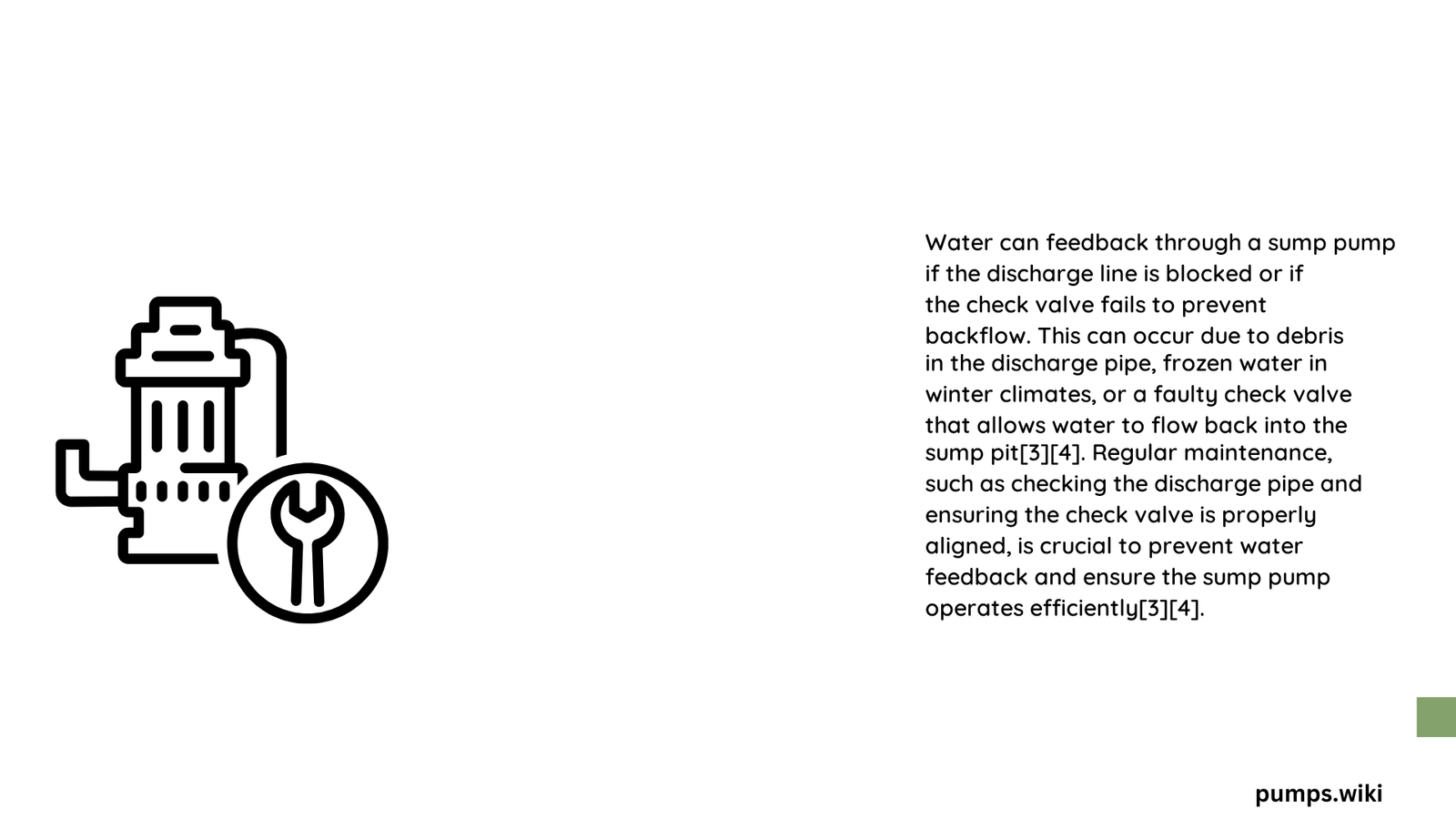Water feedback through a sump pump is a critical issue that homeowners must understand to prevent potential basement flooding and pump system damage. When a sump pump’s check valve fails or improper installation occurs, water can potentially reverse its flow, causing significant operational challenges and risking the integrity of your drainage system. Understanding these mechanisms is crucial for effective water management and protecting your property from potential water-related damages.
What Causes Water to Feedback Through a Sump Pump?
Why Does Water Reverse in Sump Pump Systems?
Water can feedback through a sump pump due to several critical factors:
- Check Valve Failure
- Prevents proper closure after pump cycle
- Allows water to flow back into sump pit
-
Increases pump operational stress
-
Pressure Differential Issues
- Uneven pipe slope
- Potential blockages in discharge line
- Inconsistent water pressure dynamics
How Significant Are Backflow Risks?
| Risk Factor | Potential Impact | Mitigation Strategy |
|---|---|---|
| Check Valve Malfunction | High pump wear | Regular inspection |
| Improper Installation | Continuous cycling | Professional assessment |
| Seasonal Water Variations | Increased backflow probability | Adaptive drainage design |
What Technical Mechanisms Enable Water Feedback?
Technical backflow mechanisms involve complex hydraulic interactions:
- Gravitational Pressure: When pump stops, residual water seeks lowest point
- Pipe Geometry: Horizontal or inadequately sloped discharge lines
- Mechanical Valve Limitations: Spring-loaded or gravity check valve performance
What Are Prevention Techniques?
Preventing water feedback requires strategic interventions:
- Install high-quality, spring-loaded check valves
- Ensure proper discharge pipe slope
- Maintain minimum 1.5-inch pipe diameter
- Regular professional system inspections
- Consider dual-valve configurations for critical systems
What Are Potential Consequences of Unaddressed Backflow?
Unmitigated water feedback can lead to:
– Premature pump failure
– Increased energy consumption
– Potential basement flooding
– Structural moisture damage
– Reduced drainage system efficiency
How Often Should Sump Pump Systems Be Evaluated?
Recommended evaluation frequencies:
– Annual professional inspection
– Quarterly check valve testing
– Immediate assessment after significant weather events
– Bi-annual discharge line cleaning
What Cost Implications Exist?
Cost considerations include:
– Check valve replacement: $50-$250
– Professional inspection: $100-$300
– Potential pump replacement: $500-$2,000
– Water damage restoration: $1,500-$10,000
Expert Recommendations

Homeowners should prioritize:
– Professional installation
– Quality component selection
– Regular maintenance
– Proactive system monitoring
Technical Specifications for Optimal Performance
- Recommended discharge height: Less than 10 feet
- Ideal pipe diameter: 1.5-2 inches
- Suggested check valve type: Spring-loaded, non-corrosive materials
- Recommended pump cycling: Less than 10 cycles per hour
Conclusion
Understanding water feedback mechanisms in sump pump systems requires comprehensive technical knowledge and proactive management. By implementing strategic prevention techniques and maintaining rigorous inspection protocols, homeowners can significantly mitigate potential water management risks.
